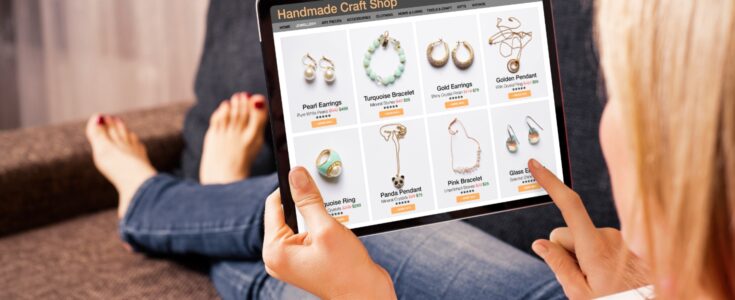
Best UX Practices for the Highest Customer Retention Rates

There is an ever-increasing need for meeting customer expectations. Today, customers’ perceptions can either make or break the deal. Therefore, businesses should begin with best UX practices for their marketing journey with their websites and digital presentation. In that, user experience design marks a vital aspect. According to research, if UX design helps boost customer retention by as little as 5%, brands shall get rewarded with a profit increase of at least 25%. Every $1 invested in UX offers about $100 in return.
What is UX?
User Experience or UX design is where the team creates products that provide meaningful experiences. The process is holistic and includes the aspects of branding, usability and function.
When defining UX, the reference is how people interact with a product. Users evaluate their experiences using the criteria below:
- What value do I derive from this product or service?
- How does the product or service work?
- How easy or difficult to use is the product?
- Does it appear to be pleasant for use?
Think of these questions as the building blocks for the user experience audit.
‘User Experience’ was coined in the 1990s by Don Norman, co-founder of the Nielsen Norman Group. As per Norman, the term encompasses all the aspects of the end-users interactions with the company.
The essential aspects that fall under the gamut of User Experience are next.
Human beings are both rational and irrational. Both these sides play vital roles in how users perceive a product or a service.
When designing a great product, context is paramount. Also, brands should understand the roles of products and services in the users’ lives.
Why UX?
Say that a user logs into your website, content or mobile application. What can and should make him visit again? It is the specific features of the platform. Research reveals that a mobile app or website with a strong score, in the below-mentioned respects, makes it persuasive to recall users and makes them loyal subscribers:
- Rewarding
- Accessible
- Findable
Now, if you already have a website, the first order of business is to reduce the bounce rate. Doing so persuades people to stay on your site for longer. And this then helps with customer retention as well. Hence, it all comes down to the presentation.
In this stead, the below guidelines serve as user experience tips.
What was the intention of the user to visit your website? And what was he aiming to see or ask? The answer shall provide insights about the content on your homepage to the buttons. Even more, it shall include the location of each service category on the sitemap.
What values do the users who enter your site possess? Also, what are the purposes of using the internet? For social media accounts frequently used, which celebrities do the users follow? These questions help with the audience targeting framework.
Businesses must also consider the negative aspects of Bad UX. Around 62% of customers admit to sharing bad experiences with others. About 91% of non-complainers leave. Also, slow-loading websites cost retailers over $2 billion in lost sales each year.
Also Read:- User Experience (UX) vs. Customer Experience (CX): What’s the Difference?
Best UX Practices that Promise Customer Retention
This is about navigation design, a crucial aspect that helps with custom retention. Navigation design involves creating, analysing and implementing ways for users to scroll the website or application. In this stead, navigation design is also vital for user experience design.
A lot goes into navigation design. These include a combination of links, labels and other UI elements.
- Enhance the users’ understanding
- Offer confidence in using your product
- Provide credibility to the product or service
Whether you go for a breadcrumb, dropdown or tabs option – the product needs a user flow. So make sure that your navigation is well-thought-out.
Interface animations are no longer unique or out-of-the-box. These show interactions between the screens. More so, they explain the use of applications or simply direct users’ attention. Below are the critical factors that merit consideration.
Among the primary factors are speed and duration. On websites, elements change their state or position. And when that happens, the animation duration should be slow enough to render users the possibility to notice the change. Research reveals that the optimal speed for interface animation is anywhere between 200 to 500 milliseconds. Anything shorter than 100 ms is deemed instantaneous. And those more than 1 second convey a sense of delay. Consider these as a part of your user experience tips.
Other crucial factors are easing, linear motion and choreography. The latter helps guide user attention in one fluid direction. And this is during the transition from one state to another. Accordingly, there are two types of choreography – equal and subordinate interaction.
Here’s what notifications do – evoke mixed reactions! And, many times, users can get annoyed by them. Nonetheless, they serve a purpose. They inform users about app crashes, new features and updates, emails and messages from friends. Also, they enable you to see and read the alert without opening the app. There are several types of notifications. Some are next.
User-generated notifications:
The simplest is mobile messaging. These are posts, likes and comments you pass on social media.
Context-generated notifications:
A fast-growing notification type, this one depends on user permissions. The best examples are location-based notifications. Also are sports and meeting updates.
System-generated notifications:
An example of such a notification is a security alert such as password requests.
Smart Notifications:
These have the unique ability to get delivered at each action. Users can set up triggers to sensitise the app regarding the timing of the notification.
Personalization means understanding user needs and interests and catering to them without asking. The crux here is automation – it learns and adapts to user behavior. Typical examples are Netflix and Google Maps. Today, customer data gets collected at every touchpoint.
One way is using the recommendation model used by e-retailers such as Amazon. It intends to display products that other target audiences and customers have reviewed. Yet another is using user ratings and viewership trends. Taking the Netflix example, the platform uses the data to gauge the shows people prefer to watch. Take these as user experience services.
Also Read: – How does personalization enhances customer experience and drive sales in B2B eCommerce?
Today, chatbots are integral for businesses with an online presence. Alternatively, these are known as Conversational AI. These engage with the audience using a conversation-style tone.
They comprise the six qualities of voice input, natural language processing (NLP), voice output, intelligent interpretation, agency and integration. However, a chatbot needs only two of these – natural language processing and intelligent interpretation.
The growth of chatbots is motivated by at least three factors. First, the reduced customer-service costs offered via bots. Second is the success of conversational-based systems that serve as interaction channels. Last is the popularity of assistants such as Alexa and Google Home. If used properly, these shall help brands with customer retention.
Understanding the people who use your services is paramount. Why do they use it, and what purpose does it serve? Where are the interaction touchpoints? Are there any unnecessary frictions?
Without feedback, it is difficult to know what works for your users. In other words, collecting feedback helps eliminate the guesswork in product development or enhancement. Also, it makes for the foundation when reiterating your product.
UX is integral for custom retention and keeping them engaged! User Experience goes beyond mere website design and caters to the entire customer journey.
Get personalized experiences at every customer touchpoint with us at Apexon. Our services are both scalable and flexible to take care of your CX holistically.
Talk to our UX & CX experts today.




